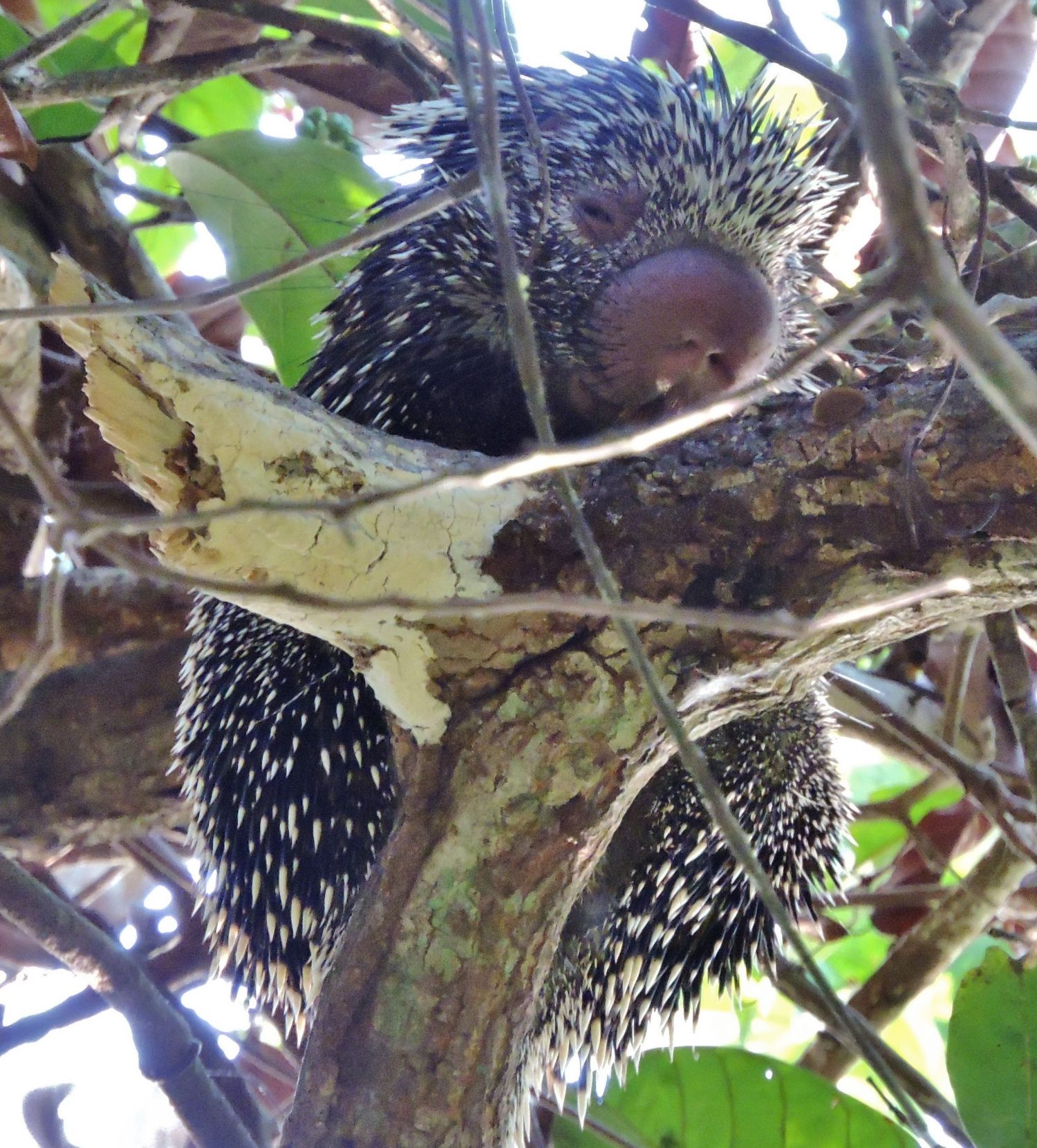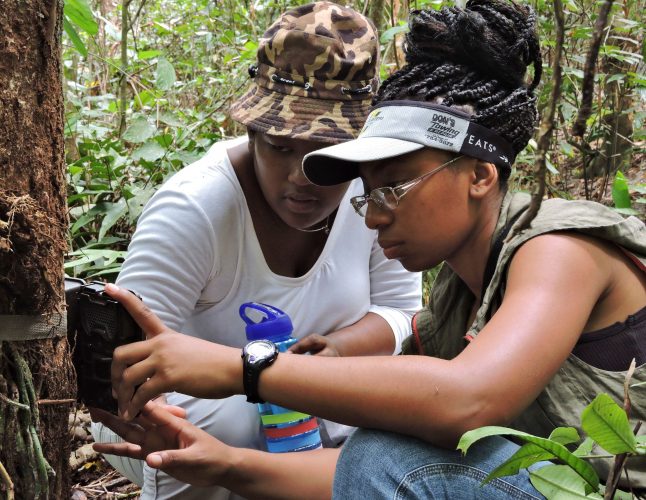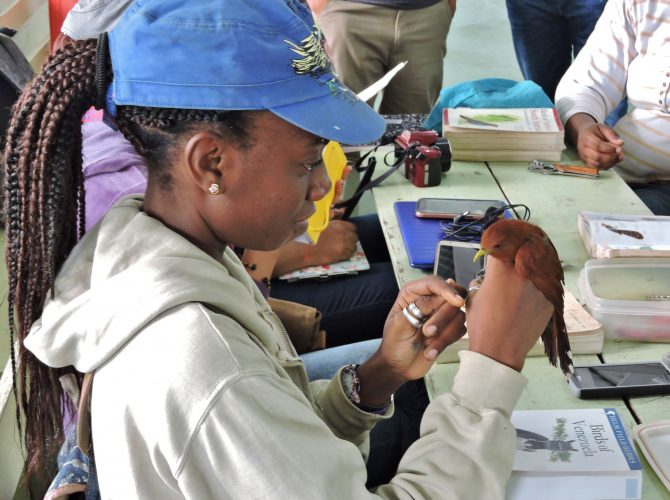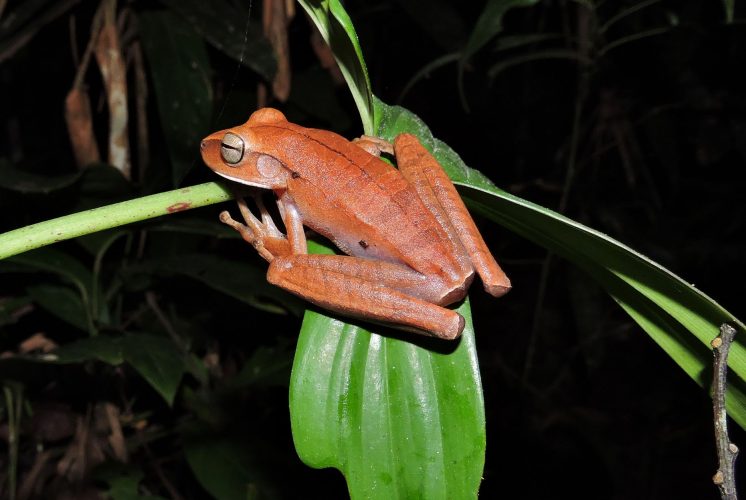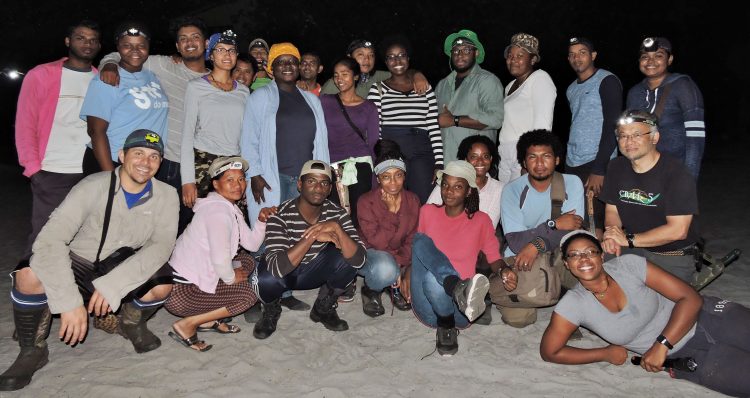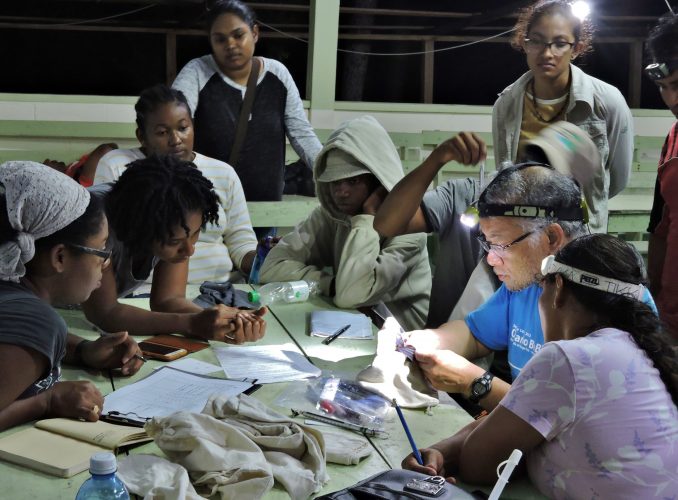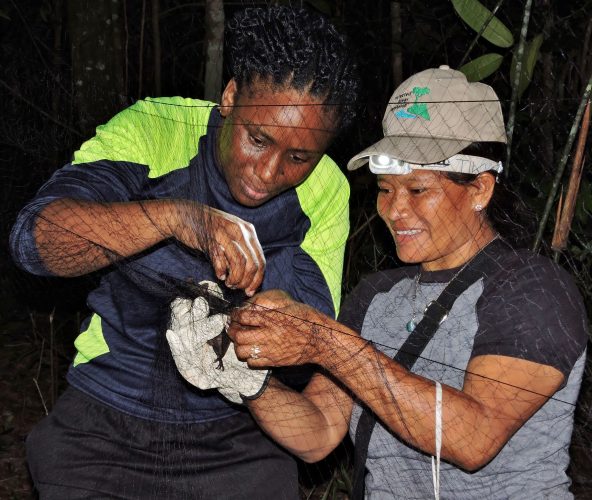A course in ‘Wildlife Survey Techniques’ was recently offered for students and faculty in the Departments of Biology, Forestry, and Environmental Science at the University of Guyana (UG) and included a field portion.
A release from the organisers of the course said that classroom-based portion of the course was delivered by guest lecturers, Dr. Burton Lim of the Royal Ontario Museum and Dr. Matt Hallett of the University of Florida and Jacksonville Zoo & Gardens. The release said Dr. Lim is an expert on small mammals in the tropics, particularly bats, and has been working here since the initial surveys ahead of the Georgetown-Lethem highway and Iwokrama forest in 1990. Dr. Hallett is the founder of the Rupununi Wildlife Research Unit and has been studying jaguars and their prey in the Rupununi for the last eight years.
The lectures were open to the public and delivered at UG’s Turkeyen campus from 5-9 March 2018.
The field portion of the course was hosted at Yarrowkabra Training Centre 12-16 March 2018, via a donation of the space by the Guyana Forestry Commission. Experts from the Rupununi, Asaph Wilson (South Rupununi Conservation Society), Eon Gray (South Rupununi Conservation Society), Kenneth Butler (Surama Eco-Lodge), and Fernando Li (Caiman House Research Station), joined Dr. Hallett and Dr. Lim in helping students build the practical skills required for undertaking wildlife research, the release said.
Students developed practical skills through daily sampling of birds (mist nets surveys; handling animals for taking body measurements and banding; conducting point counts) among other tasks. Overall, students, faculty, and instructors documented 18 species of reptiles and amphibians (6 frogs, 7 lizards, 3 snakes, 2 caiman), 98 species of birds (12 species weighed and measured), and 24 species of small mammals (22 bats, 2 rodents), and 15 species of medium-large mammals (tayra, deer, agouti, porcupine, armadillo, opossum, and 3 species of primates).
The release said that one resounding fact highlighted from the course was the value of bringing students and faculty together with expertise existing in the country. Students remarked that incorporating the instructors from the Rupununi gave the course “a mixture of professional and cultural knowledge that created a beautiful and educational mix.”
The course was supported by an academic programme to strengthen technical capacity for natural resource management in Guyana. The release said that the programme is funded by the Norwegian Agency for Development Cooperation (Norad) under the title, ‘Achieving a Green State: Building human capacity for natural resource management in Guyana’. The project aims to place the University of Guyana at the forefront of high-impact academic research on natural resource management, the release added.
